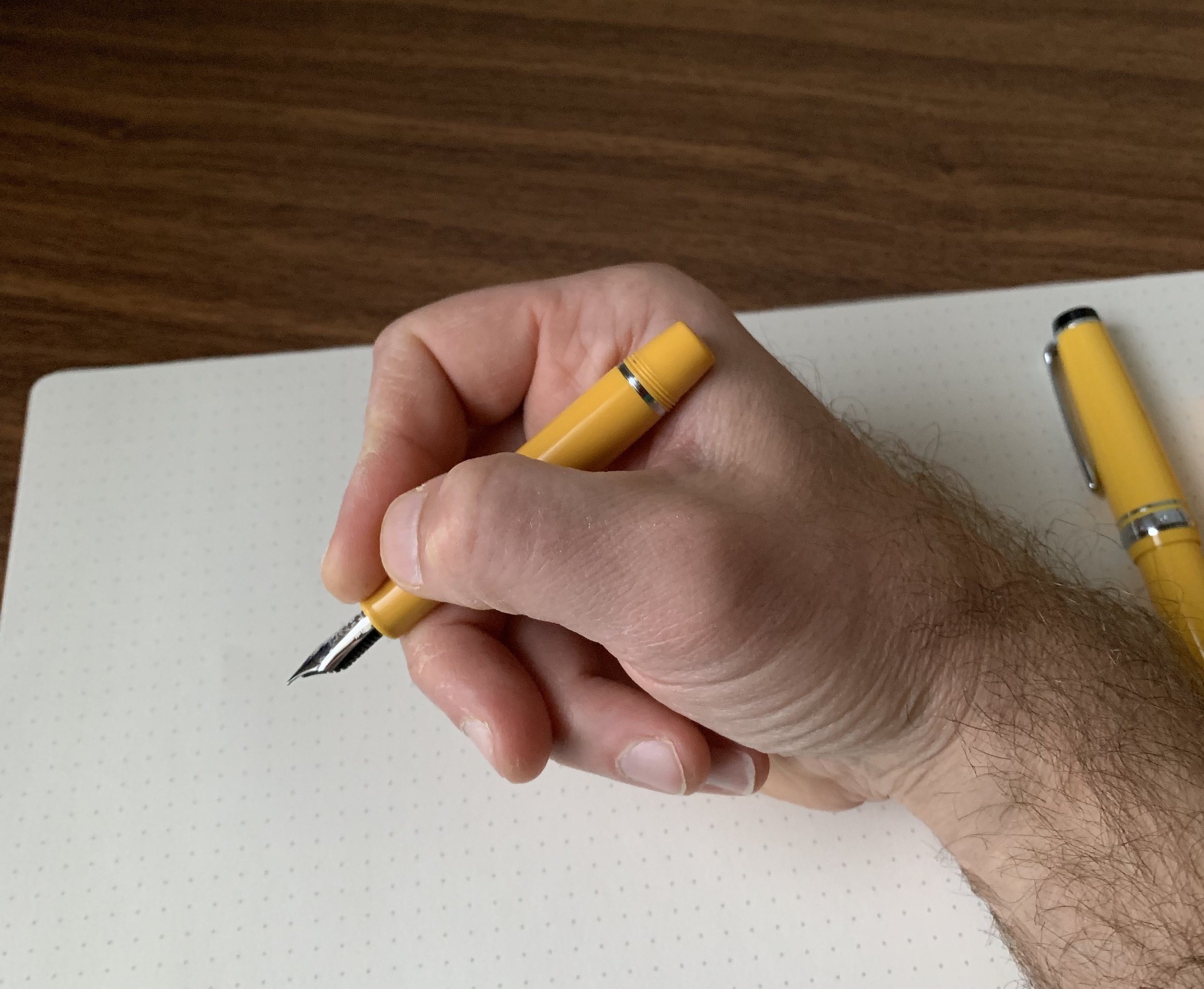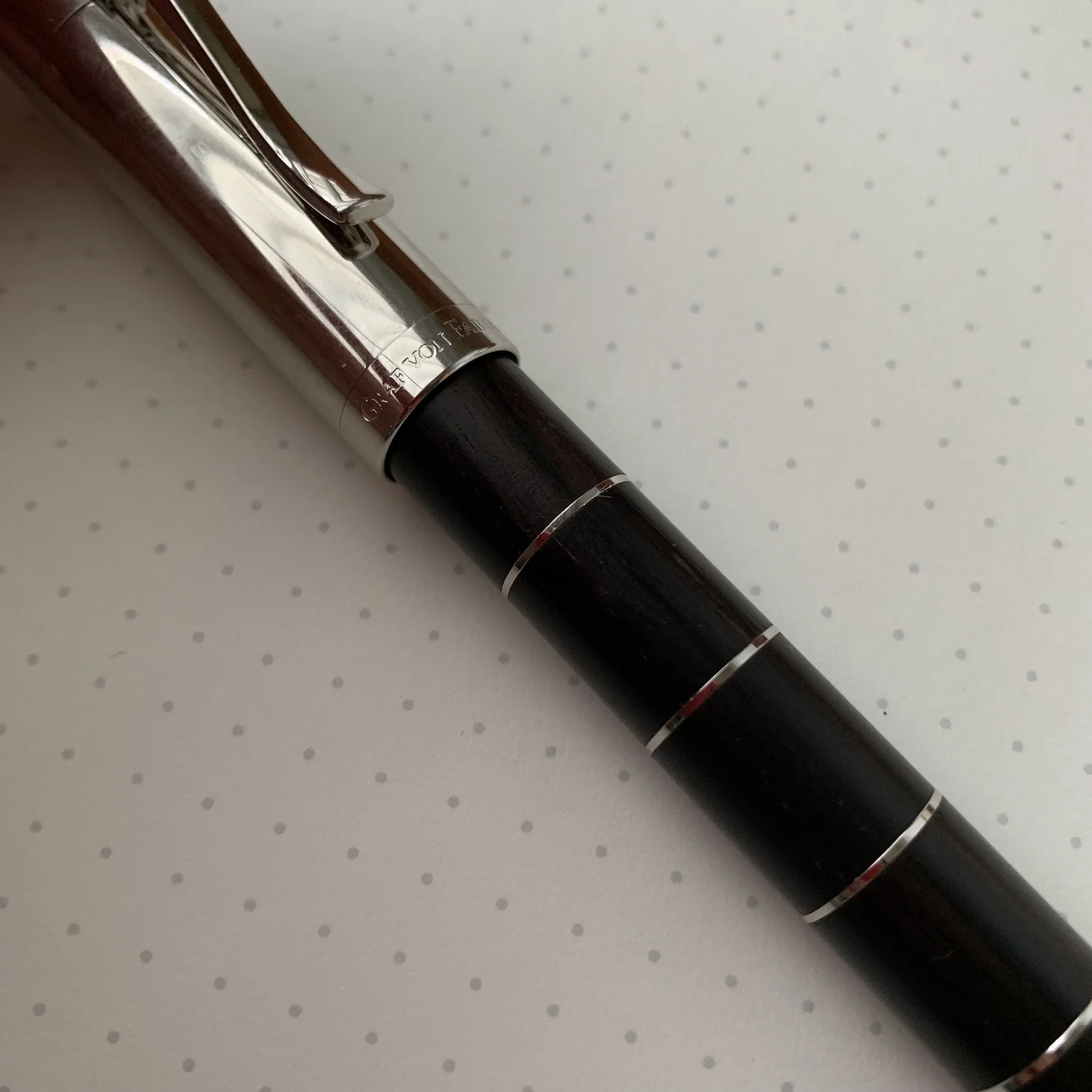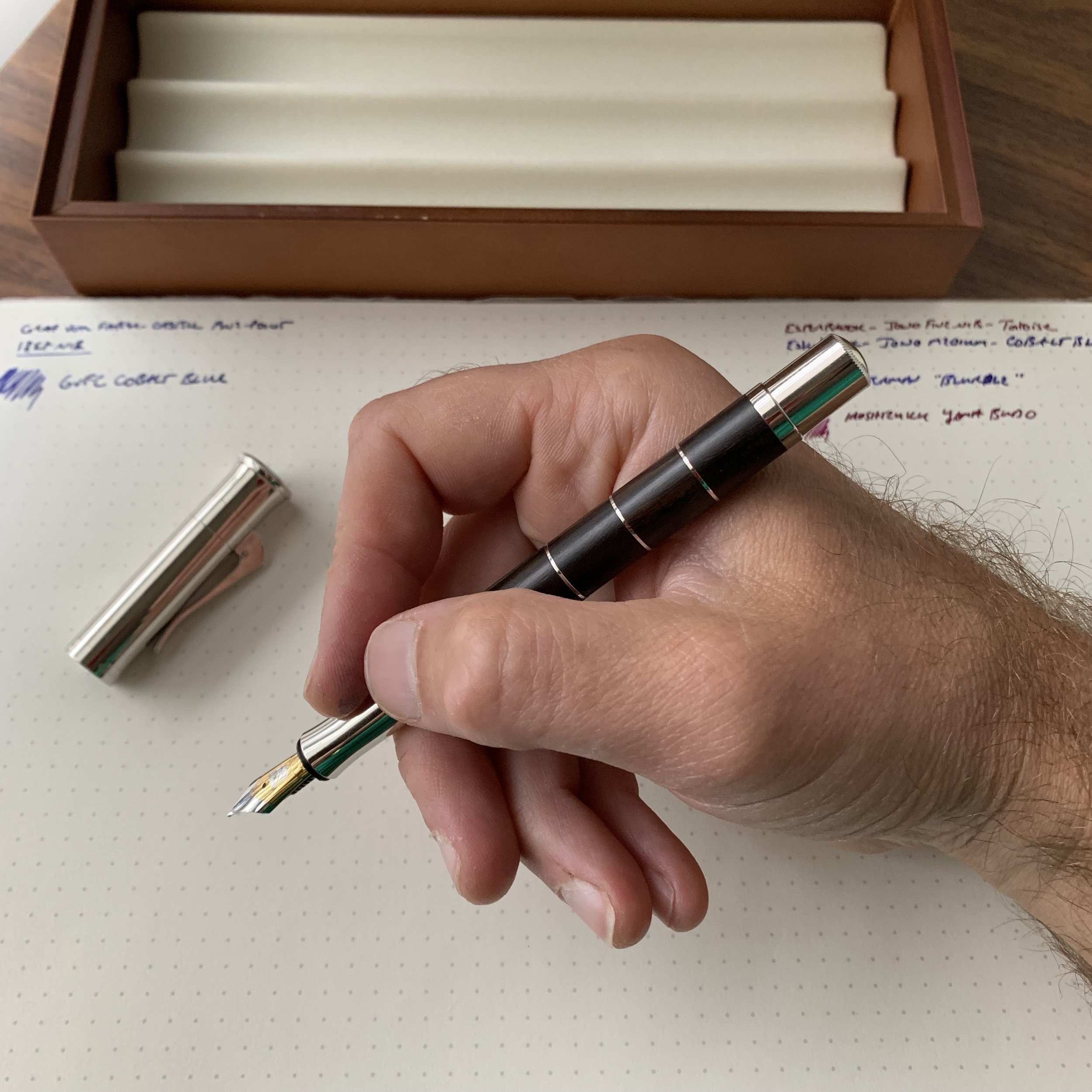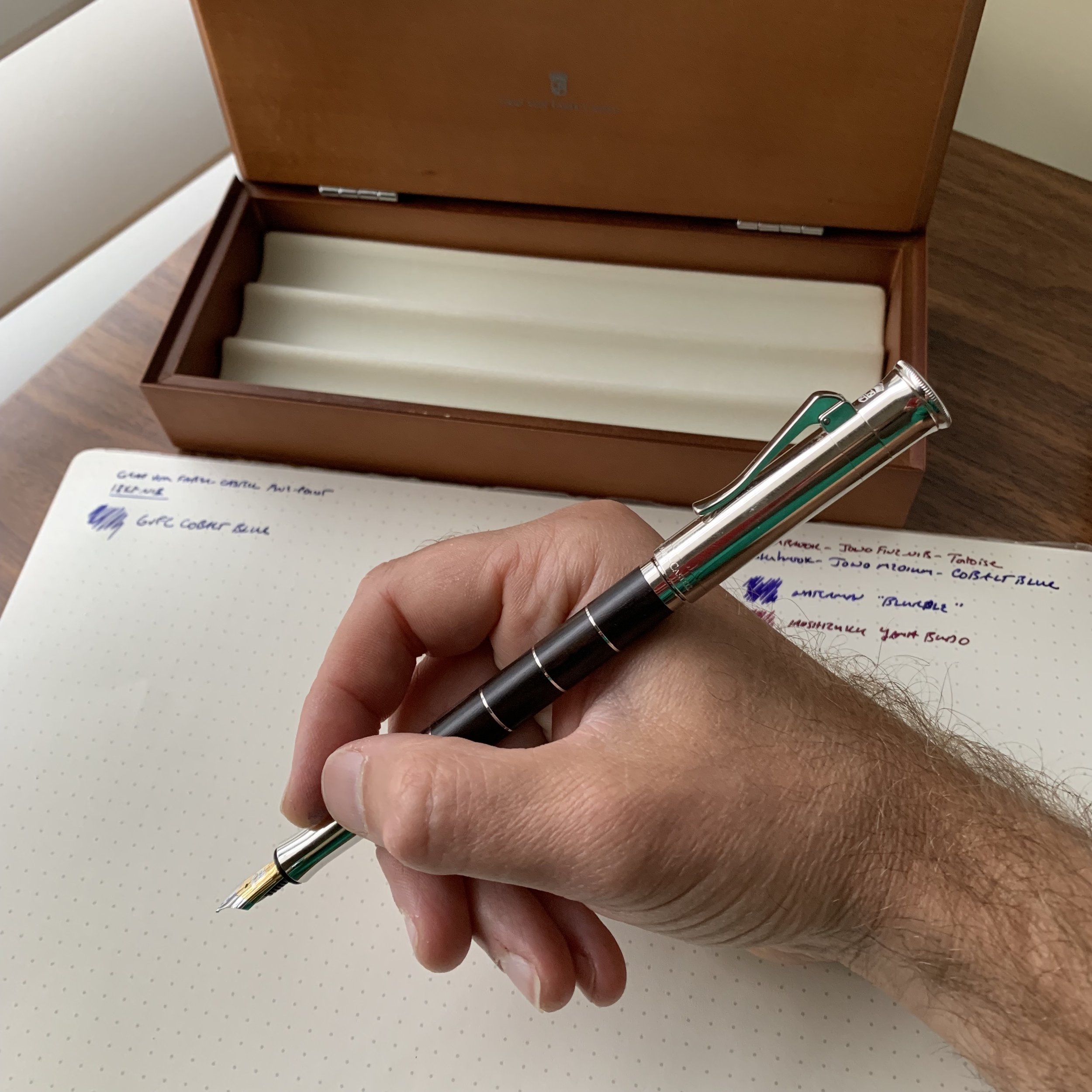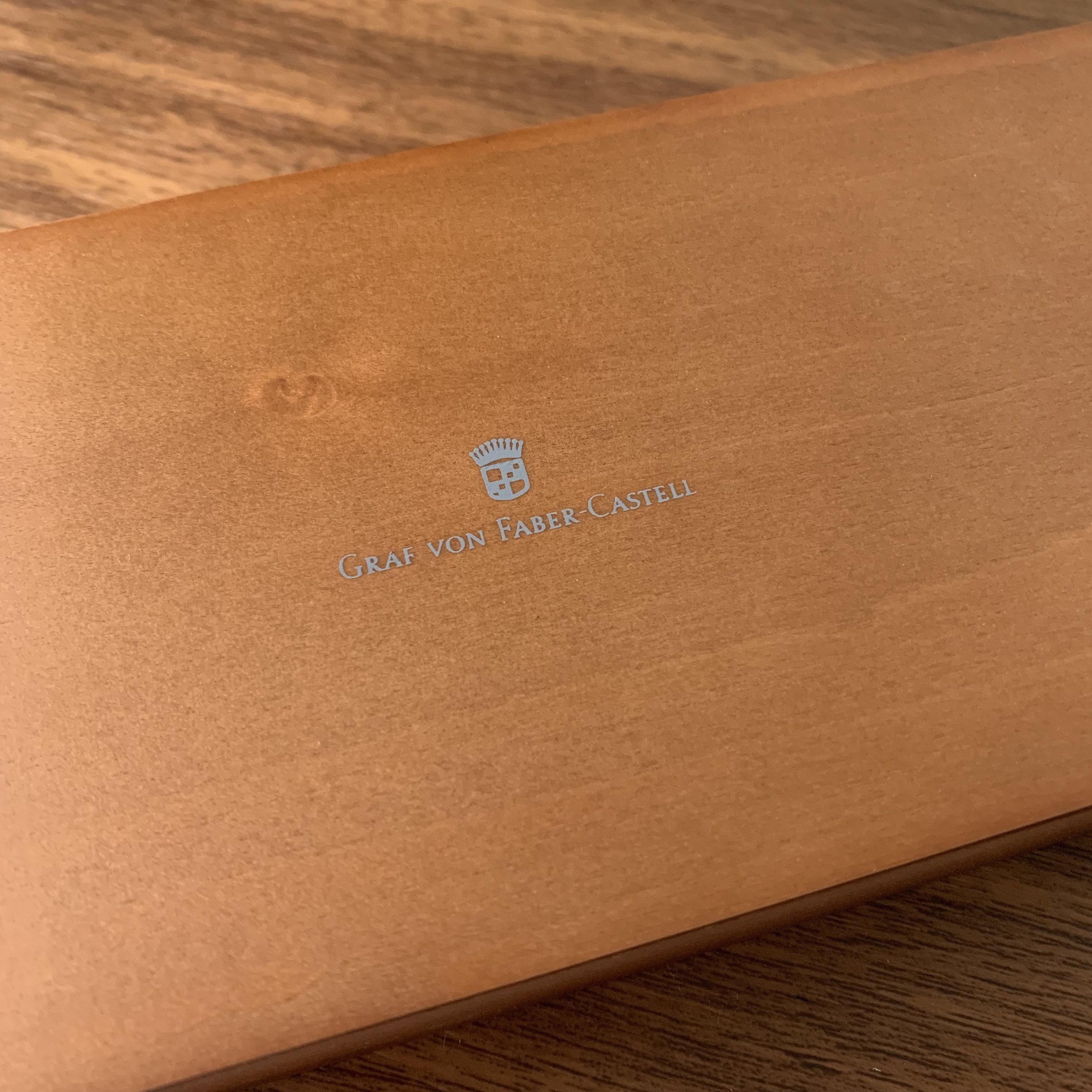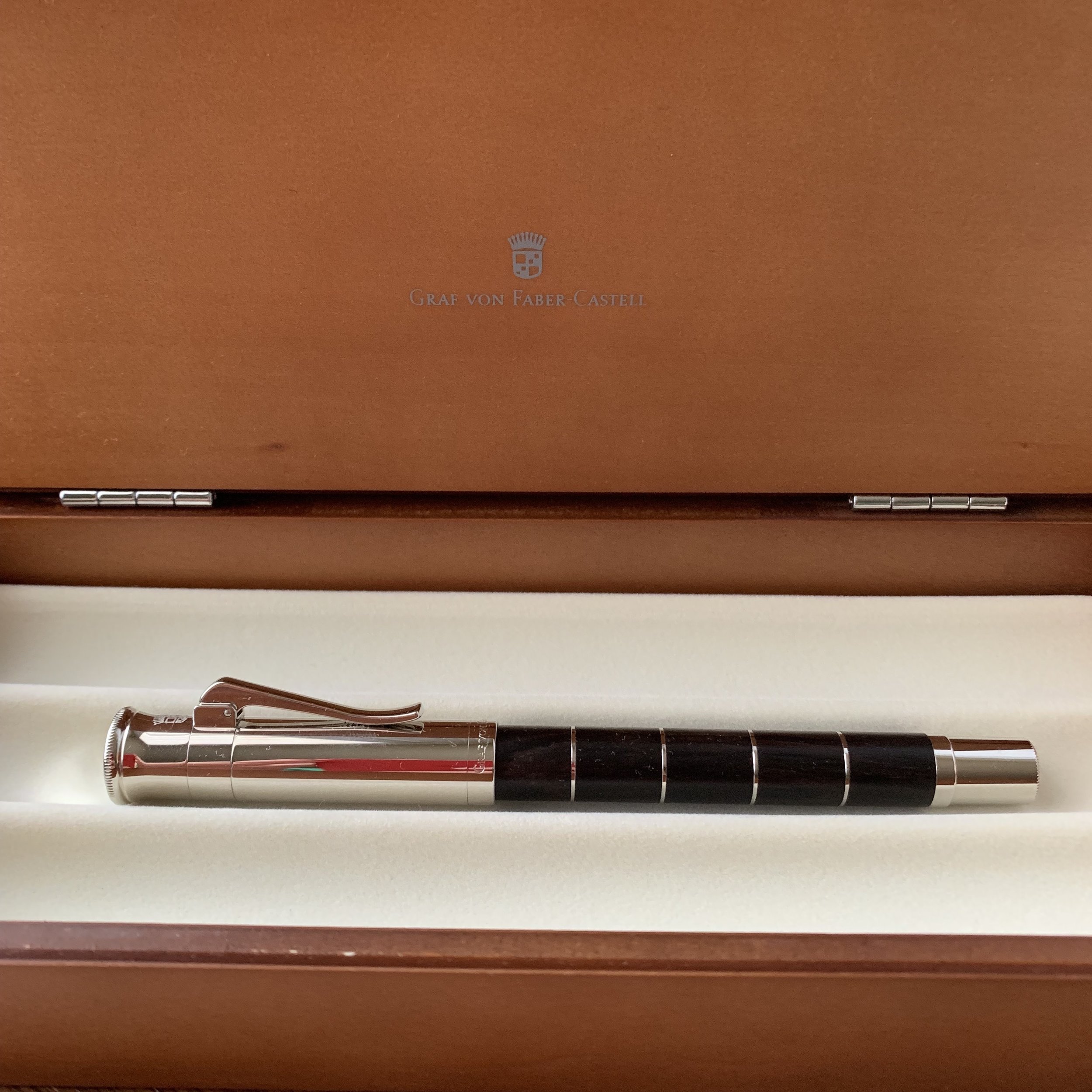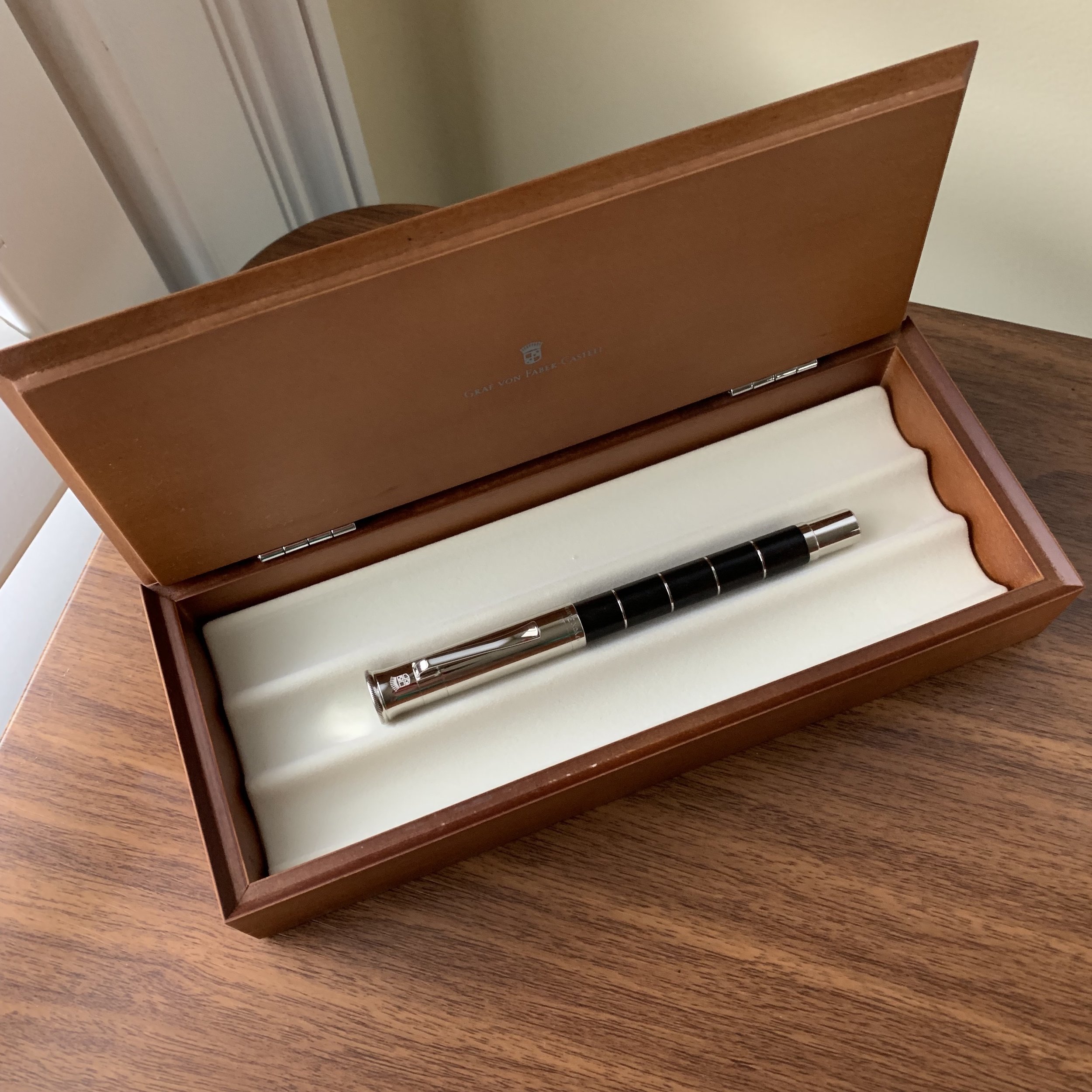Pelikan reintroduced its “iconic” M120 fountain pen a couple of years ago, in a green and black color scheme reminiscent of the original M120 school pens that the company manufactured in the 1950s and 1960s. The original pens are still fairly common finds at pen shows, so when Pelikan re-released the M120 I immediately recognized the design. At the time, I took a pass. Only when Pelikan released the “Iconic Blue” special edition, and I had the opportunity to write with one of the excellent EF nibs during my visit with the Big Apple Pen Club last month, did the M120 recapture my attention.
The Pelikan M120 isn’t a flashy pen - it’s designed to be a workhorse. The body features a classic cigar or torpedo shape, unlike Pelikan’s typical flat-ended pens like the M2XX series or the higher-end Souveran pens in the M4XX-M1XXX series. The M120 does sport the same classic “bill” clip as Pelikan’s other pens, along with - in my favorite touch - a tinted ink window that matches the overall color scheme of the pen: blue for the “Iconic Blue” M120; green for the green-black version. Posted or capped, the pen is just a touch longer than the M205 and the M400. Unposted, all three pens are the same size.
You get some extra scrolling/decor on the M120 gold-plated stainless nib. Check out the blue-tinted ink window.
The M120 comes equipped with a gold-plated stainless steel nib, an excellent writer that I might prefer to Pelikan’s gold nibs, at least in the finer tip sizes. I ordered both pens with EF nibs, and was pleasantly surprised with (1) how well both of them wrote out of the box with no modification and (2) how Pelikan’s stainless EF wrote what I consider to be a “true Western EF” line. Don’t go expecting Sailor or Pilot extra-fine, but it’s not like Pelikan’s gold EF nib, which writes like what I’d consider a medium.
Perhaps my favorite aspect of the M120 (as well as the M200 and M400 series): The ability to swap in vintage nibs like this OM (oblique medium) that I picked up at the DC Pen Show a few years back.
Pelikan has taken some flack for the price point of the M120. Currently, the standard M120 in green and black is priced at $265 MSRP with a street price of around $212, reflecting exactly a 20% discount from the MSRP. Storewide coupon codes can get that price below the $200 mark, but it’s still an expensive purchase and certainly at the higher end of the spectrum for a pen with a steel nib. Curiously, the special edition “Iconic Blue” version of the M120 has an MSRP of $235, with a street price of around $188. To me, that $30 makes a big difference in affordability (or the perception of affordability), as many people hesitate to go above the $200 price point (or even the $165 price point) for a pen with a steel nib.
Takeaways and Where to Buy
I love the M120, and while I’m a fan of Pelikan Pens in general, I think I appreciate this pen even more as a well-executed, faithful reproduction of a classic. At the end of the day, the price doesn’t even bother me all that much. While I’d like to see this pen consistently priced in the $150-165 range, I can’t say that the M120 isn’t worth the current asking price. It’s a Pelikan - the piston filling mechanism is reliable and the nibs are excellent. Moreover, if you’re a collector of vintage Pelikan pens or have a pen from the M400 series in your collection, those nibs are interchangeable with the modern M120, so this is a great way to use vintage nibs (like the oblique medium featured here) in a modern pen body that may better withstand daily use.
I acquired both of the Pelikan M120 pens pictured in this review from site sponsor Pen Chalet. Both the Iconic Blue and Green-Black models are still in stock, and have been for a while, though the Iconic Blue is classified as a “special edition,” which typically indicates that Pelikan sells the pen for about a year or so before retiring it. What remains to be seen is whether the M120 becomes a standard model in the Pelikan lineup, with new special editions coming out each year like the M200, or maybe somewhat less frequently like the M101N.
Disclaimer: I acquired both pens featured in this review from Pen Chalet using store credit earned through their affiliate program. This post contains affiliate links.
A comparison shot of (from left) the Pelikan M120 Green-Black; the M120 Iconic Blue; the M205 Olivine; and the M400 Brown Tortoise.






